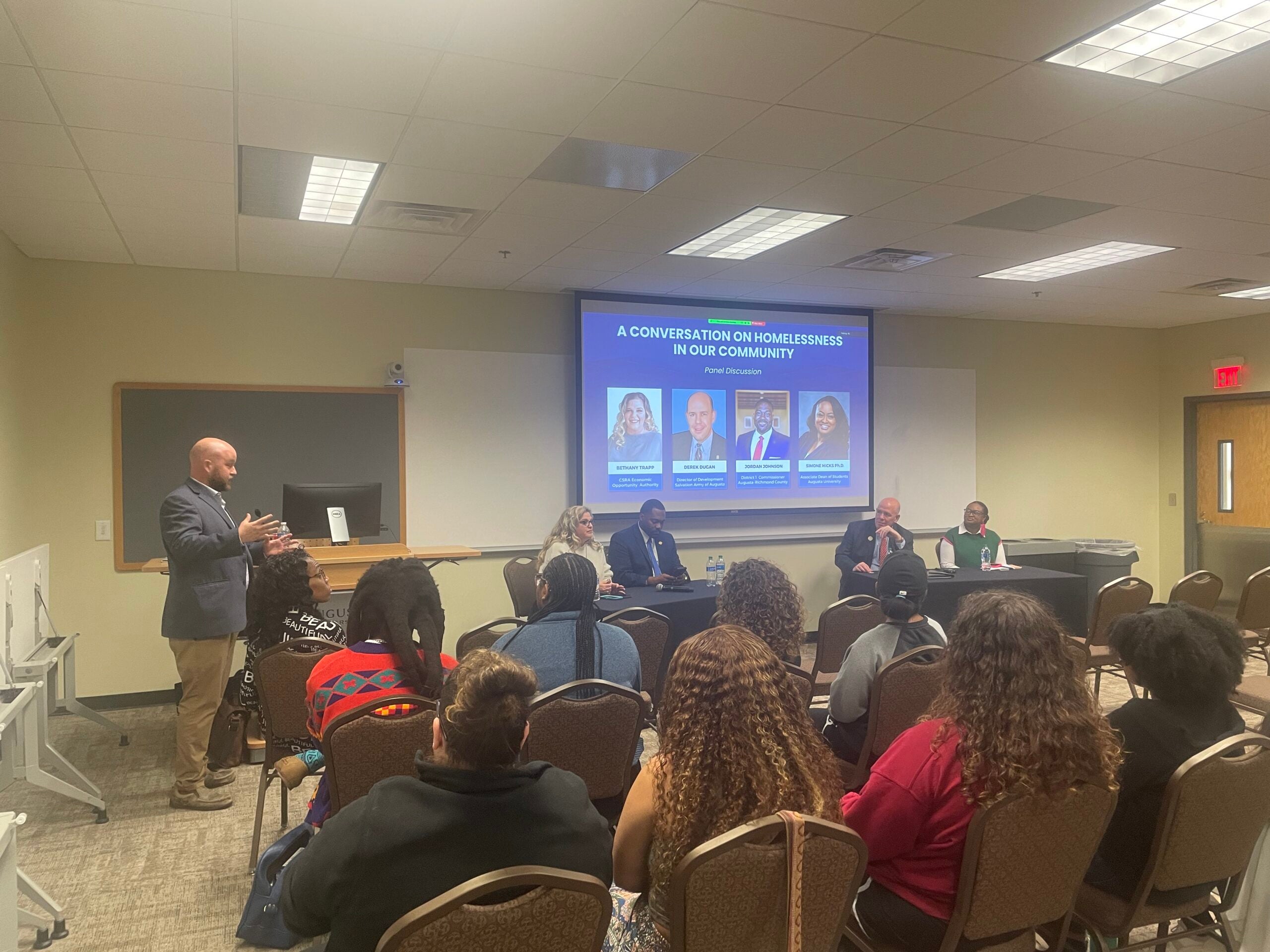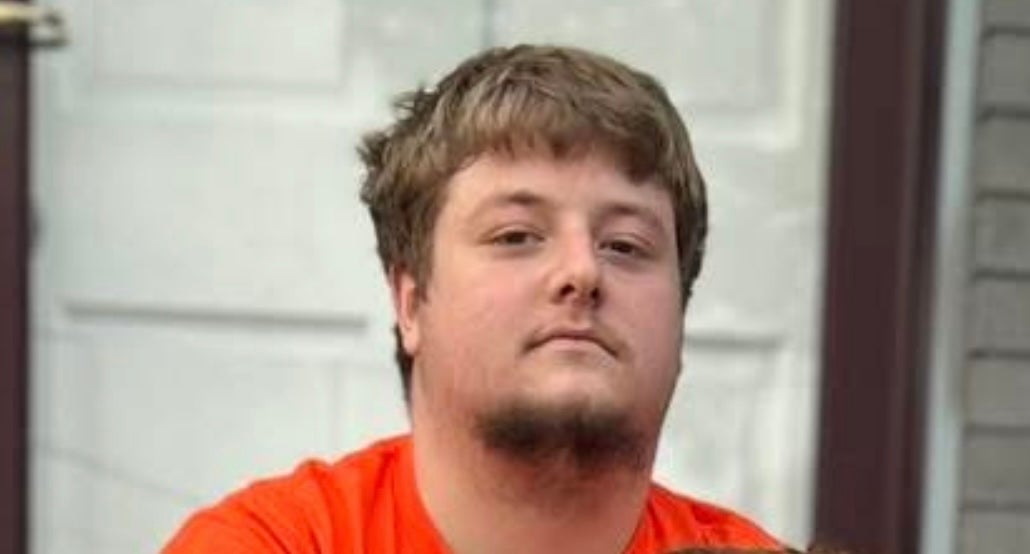The demographics of homelessness have shifted in the past several years, in Augusta, as those on the ground confronting it can, and did, attest Thursday morning.
“The face of homelessness looks like everybody in this room,” said Bethany Trapp, speaking to an audience of Augusta University staff and students in the Hardy Room of the Jaguar Student Activities Center.
Trapp is the program coordinator at the Marion Barnes Assessment & Referral Center for the Homeless, a facility of the CSRA Economic Opportunity Authority, an anti-poverty nonprofit. She was among four speakers in a panel discussion entitled “A Conversation on Homelessness in Our Community,” hosted by AU’s Volunteer Services and Community Engagement.
“[Homelessness] looks like you, it looks like me,” Trapp said. “It looks like the kids who you went to school with… like the kids in your child’s classroom… like the fast-food worker that you’re getting your food from. Homelessness does not look like the scraggly guy down the side of the road anymore.”
MORE: Burke man who used toddlers as human shields in standoff found guilty
Moderated by Wesley Meares, political science professor and director of AU’s Master of Public Health (MPH) program, the panel also included District 1 Commissioner Jordan Johnson, who co-chairs the Homeless Task Force launched in 2021, Derek Dugan, director of development at Salvation Army Augusta, and Simone Hicks, certified rehabilitation counselor and AU’s associate dean of students.
Meares addressed the varying causes of homelessness—from lack of affordable housing to mental and even physical health issues—and data from point-in-time (PIT), the Homeless Task Force’s survey of the homeless population, a number that saw sharp increases in 2008 and 2009, during the housing crises, and again in 2022 and 2023.
The Salvation Army shelter served mostly 40 to 60-year-old men—about 90%-some 15 years ago, said Dugan, who served on the earlier iteration of Augusta’s Homeless Task Force from 2002 to 2006.
He estimated that about one-fifth of those who use the shelter are chronically homeless, another fifth need emergency housing for a short period. Three-fifths, he said, are “very individualistic” cases, with issues ranging from mental health to addiction.
“We average between 15 and 25 children a night in the shelter,” Dugan said. “That did not exist five years ago.”
Trapp cited statistics from the Marion Barnes Center to highlight how economic issues have impacted the number of families experiencing homelessness. Of the 1,533 people the center served last year, she noted, 49% were children, 47% were single mothers and 90% were African American.
“That’s a huge problem,” Trapp said. “We have to start being proactive. We have to figure out why are these kids, why are these folks on the street in accessing shelters and going to hotels?”
Hicks observed similar circumstances among AU students, some of whom are food-insecure or are struggling with their bills.
“Do I eat today, or do I pay my power bill?” she said. “If I eat… then I can’t pay my internet bill. Now I don’t have access to do my studies… So it feels like a reoccurring cycle because I feel like I need to go to school to get an education, to get out of this hole that was presented to me that I don’t know how I got here.”
The panel still encouraged attendees with the possibilities of how to tackle the problem. Johnson mentioned initiatives such as the tiny home village, and the Augusta Judicial Circuit’s Adult Felony Court program.
Hicks told attendees about the university’s Open Paws Food Pantry, for students in need.
Dugan advised distributing the Salvation Army’s Change Augusta cards, which has the information about the shelter and works as a free bus pass there.
Trapp underscored the importance donations—“It doesn’t have to be a $100 donation. Every penny helps.”
For more information on the Marion Barnes Center, visit https://www.csraeoa.org/programs/
Skyler Q. Andrews is a staff reporter for The Augusta Press. Reach him at skyler@theaugustapress.com.










